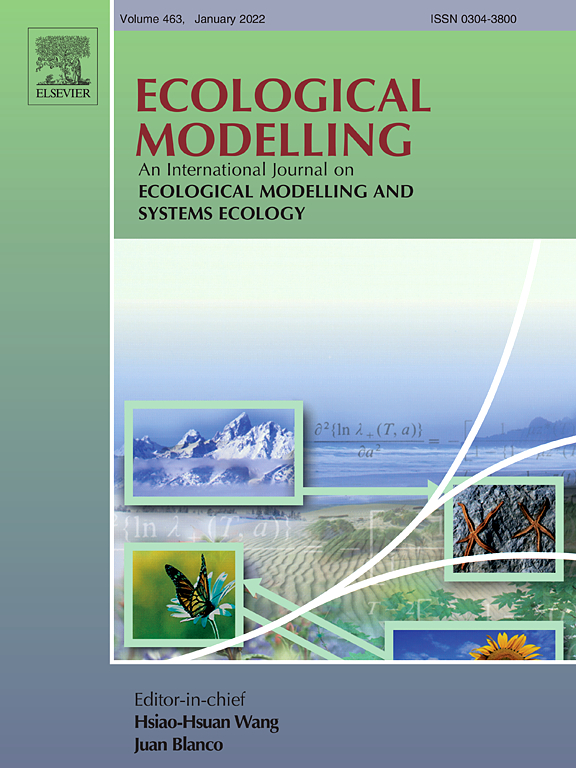Ver ítem
- xmlui.general.dspace_homeCentros Regionales y EEAsCentro Regional Patagonia NorteEEA BarilocheArtículos científicosxmlui.ArtifactBrowser.ItemViewer.trail
- Inicio
- Centros Regionales y EEAs
- Centro Regional Patagonia Norte
- EEA Bariloche
- Artículos científicos
- Ver ítem
A new model formulation for host depletion in parasitoids
Resumen
A new model of host depletion in the functional response of parasitoids is presented. Most existing models describe the dynamics of prey consumption as a sequential-memoryless/Markovian process of searching for, handling, and consuming prey, but the feeding interaction between a parasitoid and its host is different. One of the most important characteristics is that the host is not consumed, and remains in the arena. On the other hand, functional response
[ver mas...]
A new model of host depletion in the functional response of parasitoids is presented. Most existing models describe the dynamics of prey consumption as a sequential-memoryless/Markovian process of searching for, handling, and consuming prey, but the feeding interaction between a parasitoid and its host is different. One of the most important characteristics is that the host is not consumed, and remains in the arena. On the other hand, functional response models of solitary parasitoids assume that each host can accommodate an infinite number of oviposition events without being killed or becoming unsuitable as a host without the parasitoid noticing it. As a consequence, host depletion is never considered in parasitoid functional response models. To solve that issue, we extended the traditional random predator and random parasitoid functional response models of Rogers into a compartmental model formulated with ordinary differential equations, to group hosts with a different number of attacks to simulate how the parasitoid spreads the attacks between already parasitized and non-parasitized hosts. This model was further modified to simulate non-sequential memoryless search, handling and oviposition. We studied the behaviour of these models to understand how a variation of their parameters led to different shapes of functional response curves and statistical distributions of the number of parasitoid eggs laid per host. The results showed that the expected curves differ from those predicted by the simpler Holling's disk equation (type II functional response), random parasitoid models (no depletion), and the random predator model (proportional depletion). Finally, the non-sequential-memoryless models predict straight curves resembling a type I functional response at low host densities.
[Cerrar]

Autor
Bruzzone, Octavio Augusto;
Rossini, Luca;
Aguirre, María Belén;
Logarzo, Guillermo Alejandro;
Fuente
Ecological Modelling 475 : 110214. (January 2023)
Fecha
2023-01
Editorial
Elsevier
ISSN
0304-3800
1872-7026
1872-7026
Formato
pdf
Tipo de documento
artículo
Palabras Claves
Derechos de acceso
Restringido
 Excepto donde se diga explicitamente, este item se publica bajo la siguiente descripción: Creative Commons Attribution-NonCommercial-ShareAlike 2.5 Unported (CC BY-NC-SA 2.5)
Excepto donde se diga explicitamente, este item se publica bajo la siguiente descripción: Creative Commons Attribution-NonCommercial-ShareAlike 2.5 Unported (CC BY-NC-SA 2.5)


